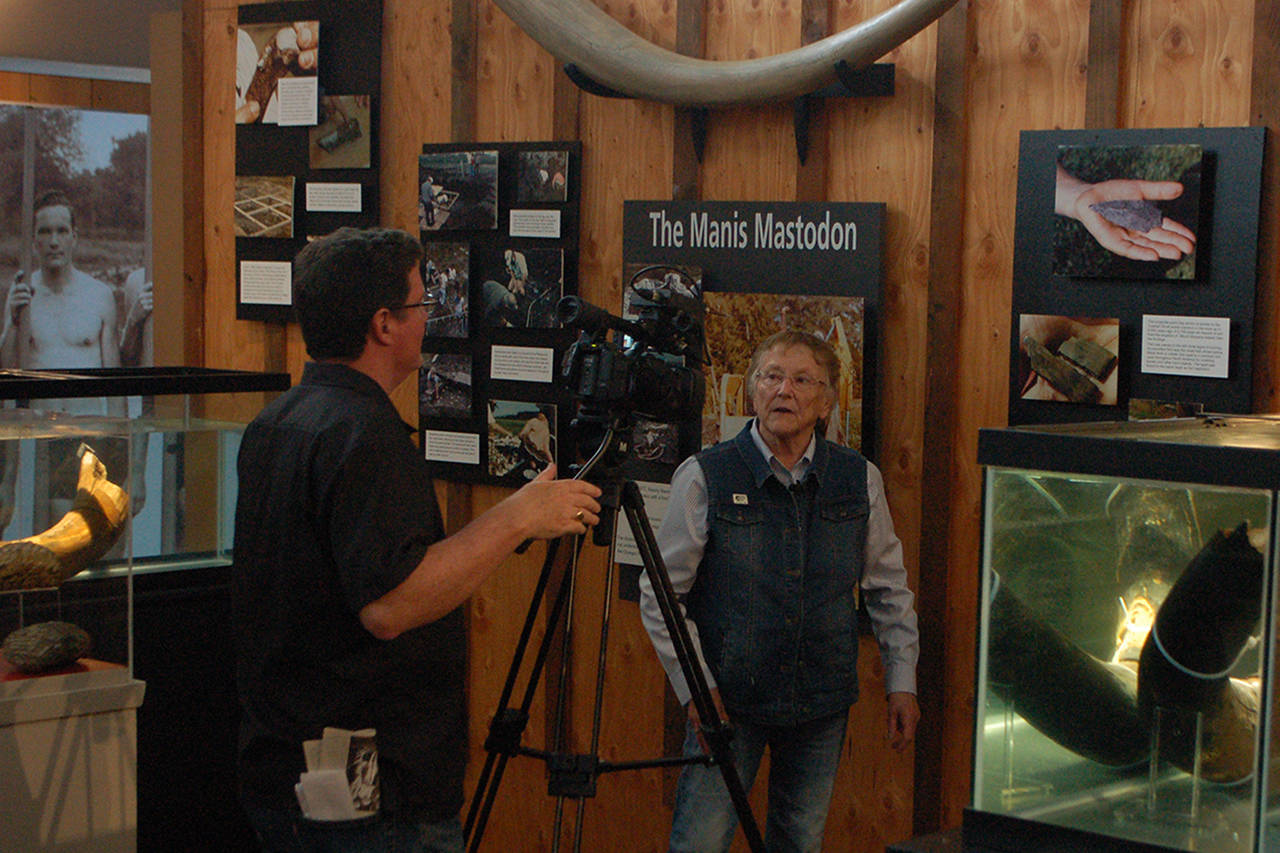On the web
The KBTC video on the Manis Mastodon can be found online at www.pbs.org/video/manis-mastodon-1bkzyd.
Many Sequim residents know about the Manis Mastodon, the more than 13,000-year-old remains found in a Happy Valley farm in 1977. Thanks to local public broadcasting affiliate KBTC, others outside the area will get a chance to know more about the historical find.
“I love coming out to highlight stories like this,” said KBTC associate producer Chris Anderson, who came to Sequim July 16 to shoot video and conduct interviews about the mastodon for the “Northwest Now” online program.
“There’s so many stories like this incredible find that deserve more attention, and it’s great to learn more about it and be able to share it with our viewers,” Anderson said.
Anderson’s story, released last week and posted on the PBS website, touches on the discovery of the mastodon by Emanuel Manis and his wife Clare Manis Hatler, as well as the historic implications of the find.
The discovery was notable because there was a piece of what turned out to be the tip of a man-made spear in a rib of the mastodon, which given the roughly 13,800-year-old radiocarbon dating of the mastodon’s remains strongly implies that there were humans in the area several hundred years before what had been previously thought of as the first group of people to arrive in North America, the Clovis people.
Anderson interviewed Clare Manis Hatler about the mastodon, as she’s the last survivor of the find. Her husband passed away before the 25th anniversary celebration of the discovery in 2002, and the archaeologists from Washington State University lead by Dr. Carl Gustafson who came out to dig out the remains and study them in 1977 have all passed away over the last 15 years, according to Hatler.
Fortunately, she’s done so much studying of her own on the Manis Mastodon and mastodons in general since the discovery on her property — a national historic site since 1978 — that she does not lack for expert information.
“Dr. Gustafson once told me that I probably know more about mastodons at this point than any archaeologist,” Hatler said during the interview.
Some of the remains of the Manis Mastodon are on display along with a significant amount of information about the find and it’s meaning at the new Sequim Museum & Arts building at 544 N. Sequim Ave. The rib bone with the spearhead and some other parts of the remains were recently moved to the Washington State Historical Society in Tacoma for further study.
See the video at www.pbs.org/video/manis-mastodon-1bkzyd/?fbclid=IwAR0QVeFRXBAuE9HV0sYm08j-GiUz293BiTQVJ9Cjdksq65o-JX6X7vmFAyw.



